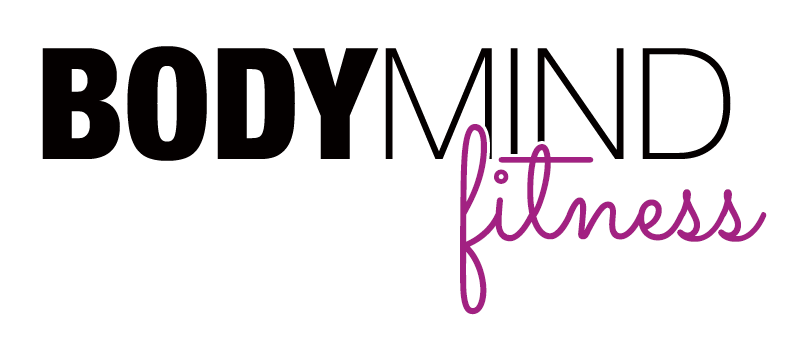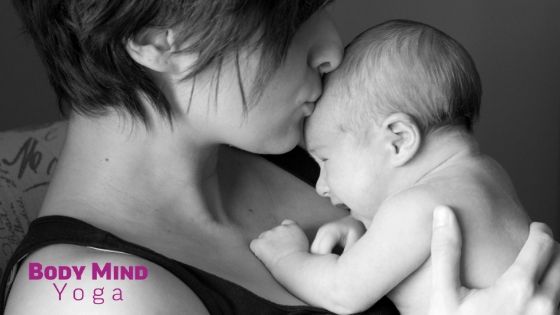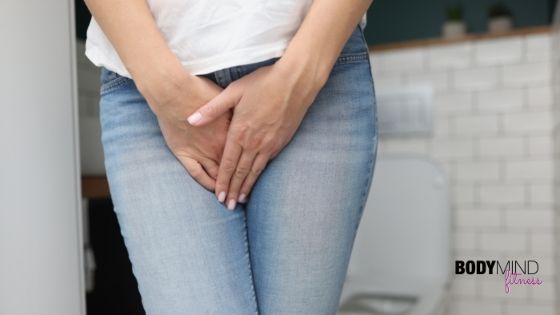Social media showing off the latest super fit celebrity - 6 days after giving birth. Facebook saturated with advertisements to get your “pre-baby body” back; with this short workout and that drink supplement. Your physician saying it is safe to resume physical activity (usually at your 6 week checkup). How do we process all of that input? How much physical activity is safe to “resume”. Do you dive right into the most intense, full body fitness regime on the market? Or take it slower much slower?
At 2.5 months postpartum, I embarked on Beachbody’s Insanity Workout. That first workout ended in tears.
It wasn’t that I pushed myself to a place of pain or injury, no it was because I had never felt so very weak. Weaker then before fitness became such an important part of my life. This coming from the girl who scored 51% in grade nine gym class, so I know weak first hand.
At the time I compared myself to feeling like “a deflated balloon” and being “a shadow of my former self” - I actually said those words out loud to my hubby.
After giving birth we are at our most vulnerable. Our bodies have just spent the last nine months growing, developing and nourish this little being, hormones are still flooding our system. The things our bodies are capable of doing are truly incredible - when you stop to think about it. But those incredible things, aren’t always the easiest to recover physically from. Nor are they always the easiest to process from a social, emotional and mental standpoint, especially when taking into account all the conflicting information being presented to us.
In the medical community there are a lot of mixed opinions on how to introduce fitness back into the Postnatal body. Physiotherapists specializing in Pelvic Health have a unique view on postnatal exercise then the vast majority of the medical community. Where the general medical community (and social media) promote the ability for the vast majority to dive right back into strenuous fitness regimes of all shapes and sizes, Pelvic health physiotherapist suggest a much more relaxed and progressive approach.
At 8 months postpartum, before embarking on my studies in Prenatal/Postnatal Fitness and subsequently Pelvic Health, I was cooking in the kitchen. There I was, standing at the stove, debating wether to spiral-ize zucchini or save myself the trouble and just eat the pasta - gluten, carbs and all - and watching my little one playing with pots and pans on the floor. I remember it it so very clearly because it was at moment that I peed myself (now it’s out there on the internet!! My mom will be so embarrassed).
I immediately booked myself for my initial consultation with Angela Growse, a local Pelvic Floor Physiotherapist (whom I need to thank for introducing me to topics I am UBER passionate about). During my initial consultation, we talked about my Pelvic Floor, conducted movements to test my core strength and had an optional internal exam. Afterwards we started discussing fitness. During our chat, she mentioned she recommends at 6 weeks postpartum women should be focusing on walking and yoga, gradually increasing intensity in these areas before progressing to higher intensity programs and classes.
Oops.
Suddenly I flashed back to my attempt at the Insanity workout. Two and a half months postpartum and crying on the floor. “Insane” clearly doesn’t even begin to cover it.
That initial consultation began my studies into the world Pelvic Health and those of you who know me, know I go all in. Every single training available, I sign up; every recommended literature is in my Indigo Shopping Cart; I want to know everything and I want to know it NOW.
Physiotherapist Brenda Walsh wrote in an article published February 22, 2016 on suncityphysiotherapy.com ,
“Preganancy and Childbirth puts a woman’s body through one of her life’s most strenuous events. Laxity in the ligaments, an increase in abdominal girth, an exaggerated forward tilt of the pelvis can alter the centre of gravity, affecting dynamic stability of the spine and pelvis. Combined with the load of carrying a new baby, breastfeeding, these added stresses to the spine can lead to postural fatigue and discomfort.”
These physical attributes don’t go away as soon as the baby is out, so why are we putting so much pressure on ourselves and putting additional stress on our bodies?
For decades, France has provided physiotherapy that helps to strengthen a new mom’s pelvic floor and it is subsidized by the government! Now there’s a country that’s doing it right. In Canada, new moms can have up to one year (although there is discussion of 18 months in the works) pregnancy and parental leave (dads also have the ability to take a portion or the entirety of the parental portion of the leave) with approximately 55% of your previous year’s income paid to you by the Employment Insurance Special Benefits program. In the US, new moms are lucky to get 6 weeks off from work.
Pelvic Floor Dysfunction does NOT just affect women who have had children; athletes and age can also play a role and it is not exclusive to women. YES, men can also suffer from Pelvic Floor Dysfunction.
Speaking to a Pelvic Floor Physiotherapist and assessing where your body is today is the first step to ensuring that your Inner Unit (your TRUE core) consisting of your Pelvic Floor, Transverse Abdominus, Diaphragm and Multifidus is functioning optimally. You will start to see results in your training in time and with commitment.
Don’t rush. Spend as much time as you can in bed, resting, healing and enjoying as many baby cuddles as you can (they go fast). This was definitely not my goal with my first baby, my goal instead was “how quick can i get back into my skinny jeans.”. But this time around, I vow to take care of myself more, nurture both of my daughters in the best way I can. Once my body feels ready (whether it’s six weeks or beyond), start bringing fitness back into my life and introducing my little girls to Gentle Yoga - the walking may have to wait until the warmer weather arrives.
We need to take care of ourselves Mamas. Physically and emotionally.
namaste.
Dominique
For some further reading on returning to exercise after baby, check out these articles.
http://www.pelvicfloorfirst.org.au/pages/returning-to-sport-or-exercise-after-the-birth.html .





